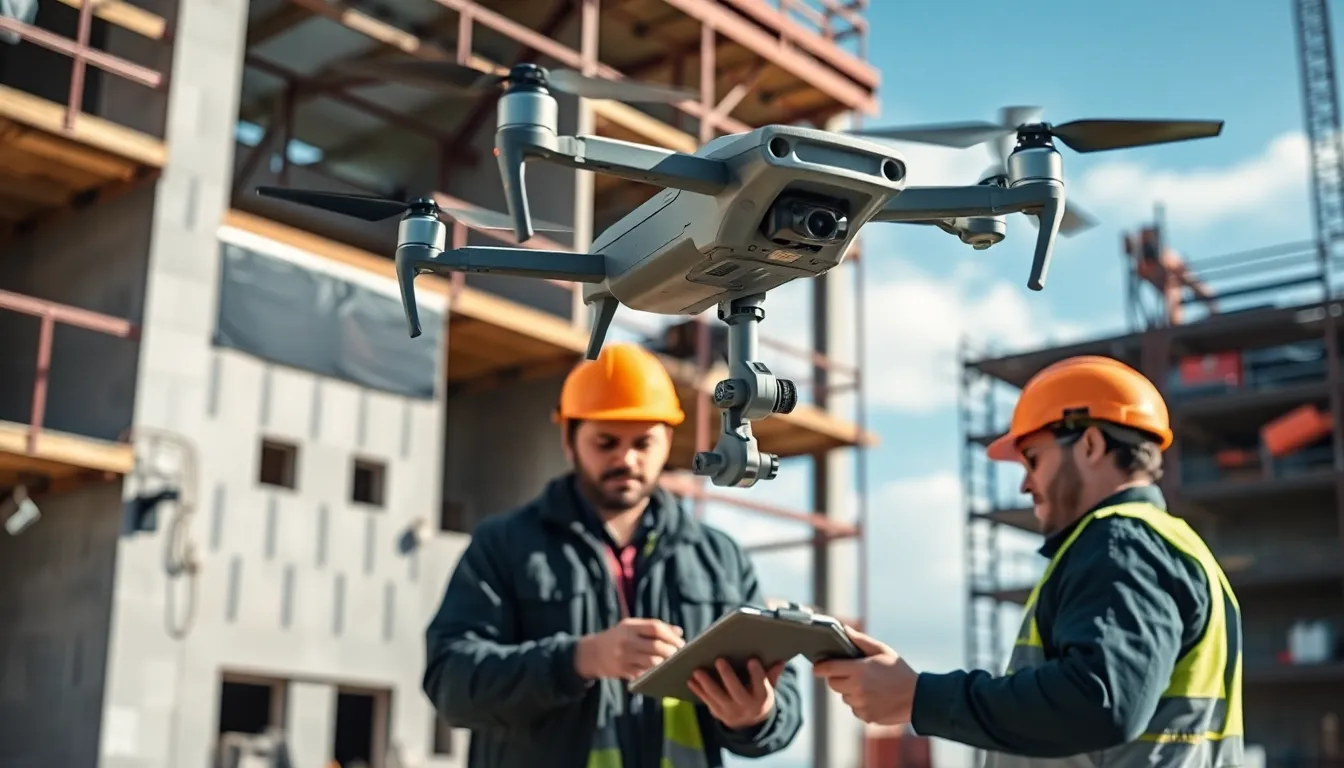Ever wondered what happens when a hammer meets a drone? You might just picture a mishap from a slapstick comedy, but hold onto your hard hats, hammer drones are transforming the skies in ways that are more profound than you’d think. These innovative machines are not only elevating construction but also reshaping logistics, agriculture, and even disaster response. Buckle up as we explore this cutting-edge technology that’s literally taking off.
Table of Contents
ToggleWhat Are Hammer Drones?

Hammer drones are specialized aerial vehicles designed for robustness and efficiency. Unlike traditional drones, these machines feature enhanced durability and capability to perform tasks that require a bit of force, much like their namesake. They usually integrate advanced materials and engineering to withstand the rigors of various operational environments, from rugged construction sites to disaster zones.
In essence, hammer drones combine the versatility of aerial mobility with the strength of powerful tools. They operate under specific parameters, often deploying specialized attachments that enable them to perform tasks such as carrying heavy loads or even performing delicate actions like precise hammering. Their design, functionality, and purpose make them an essential part of the future of aerial technology.
Key Features of Hammer Drones
The impressive lineup of features that hammer drones bring to the table sets them apart from standard drones. Here are some notable characteristics:
- Enhanced Payload Capacity: Equipped to carry more weight, hammer drones can handle tools, materials, or even emergency supplies. This capability makes them invaluable for construction, agriculture, and disaster relief tasks.
- Advanced Navigation Systems: Cutting-edge GPS and obstacle detection systems enable precision flying, allowing for meticulous operation even in complex environments.
- Durability and Weather Resistance: These drones are often built with corrosion-resistant materials and components that withstand diverse weather conditions, ensuring reliable performance.
- User-Friendly Interfaces: With intuitive controls and interfaces, even those new to drone technology can learn to operate hammer drones quickly and effectively.
Applications of Hammer Drones
The applications of hammer drones extend far beyond what most people might imagine. Here are several sectors where these drones are making a positive impact:
Construction
Builder bots are embracing hammer drones for their ability to deliver tools and materials to hard-to-reach areas, significantly speeding up projects.
Agriculture
Farming operations use this technology for crop monitoring and even applying fertilizers or pesticides, allowing for more precise and efficient farming practices.
Emergency Response
In disaster situations, hammer drones can deliver supplies and aid, perform reconnaissance, and even assist in structural assessments, all while reducing risks to human responders.
Search and Rescue
When every second counts, the speed and accuracy of hammer drones can make all the difference in locating individuals lost in remote or wilderness areas.
Advantages of Using Hammer Drones
There are numerous advantages to deploying hammer drones in various applications:
- Increased Efficiency: Their ability to complete tasks quickly allows projects to advance faster than ever. Imagine slashing construction time in half.
- Cost-Effectiveness: Over time, the operational costs associated with labor and logistics could decrease significantly. Less need for manual labor translates to lower ongoing expenses.
- Safety Improvements: By taking on dangerous tasks like delivering supplies to disaster zones or working in hazardous environments, hammer drones enhance the safety of human workers.
- Data Collection Capabilities: Equipped with cameras and sensors, they can gather crucial data that informs decision-making across multiple industries.
Challenges and Limitations
Even though the many benefits, hammer drones are not without their challenges. Here’s a closer look at some limitations:
- Regulatory Restrictions: Legal guidelines can inhibit the operation of drones, especially in populated areas. Navigating the legal landscape requires careful consideration.
- Technical Complexities: The technology can be complex, requiring specialized knowledge for maintenance and operation. This might deter some potential users.
- Battery Life: Although improving, battery life remains a concern, limiting the operational range of these drones. Extended tasks may require multiple drones or longer downtimes for charging.
Future Trends in Hammer Drone Technology
The future of hammer drones looks bright, with several emerging trends that could revolutionize their use:
- Integration with AI: Expectations are high for drones that can use artificial intelligence to enhance navigation and task performance, adapting to changing conditions autonomously.
- Universal Application: As technology evolves, more industries are expected to adopt hammer drones, potentially leading to new uses and innovations.
- Collaboration with Robotics: Pairing hammer drones with other robotic technologies could enable complex operations that require multitasking and precision, lifting the capabilities of both technologies.









